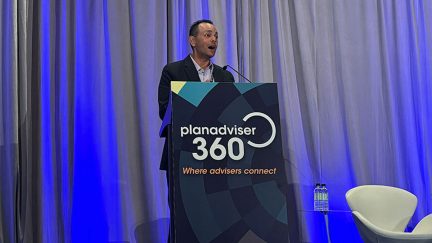Never miss a story — sign up for PLANADVISER newsletters to keep up on the latest retirement plan adviser news.
Participant Could Get Relief for Difference in Document and SPD
The 6th U.S. Circuit Court of Appeals has determined that a pension plan’s summary plan description (SPD) failed to provide all the information required by the Employee Retirement Income Security Act (ERISA) about eligibility for supplemental benefits, so a participant who relied on the SPD and expected those benefits may be due relief.
In its opinion, the court noted that under ERISA, the SPD must be “written in a manner calculated to be understood by the average plan participant, and shall be sufficiently accurate and comprehensive to reasonably apprise such participants and beneficiaries of their rights and obligations under the plan.” In addition, the SPD must include, “the plan’s requirements respecting eligibility for participation and benefits; a description of the provisions providing for nonforfeitable pension benefits; and circumstances which may result in disqualification, ineligibility, or denial or loss of benefits.”
Citing the Supreme Court decision in CIGNA Corp. v. Amara, the 6th Circuit said that under ERISA Section 502(a)(3), a material conflict between the SPD and plan document can give rise to a claim for equitable relief. The Supreme Court ruled that under ERISA 502(a)(1)(B) conflicts between the terms of the SPD and plan document must be resolved in favor of the plan document, but it suggested that conflicts could be addressed under ERISA 502(a)(3) which allows a plan “participant, beneficiary, or fiduciary ‘to obtain appropriate equitable relief’ to redress violations of ERISA.”
NEXT: Case specificsThe Chrysler Group LLC Pension Plan provided for supplemental benefits to be paid to early retirees who had 30 years of service and commenced payments within five years of retirement. However, while the plan document stated that vested, terminated participants “who met the eligibility for early retirement at the date his employment terminated, shall not be eligible to receive and early retirement supplement,” the SPD said “You do not need to be actively employed at retirement to be eligible for a supplement.” Participant Randy D. Pearce was offered an early retirement incentive in 2008, which he denied. Afterwards, Chrysler terminated him for misuse of a company vehicle. Pearce applied for benefits thinking, after reading the SPD, that he would get his accrued pension benefits as well as the supplemental payments. However, he did not get the supplemental payments and after filing several appeals, he filed a lawsuit. A district court granted summary judgment to Chrysler for some claims and dismissed Pearce’s 502(a)(3) claim as futile. However, the 6th Circuit reasoned that since the SPD offered no indication to Pearce that his eligibility for supplemental benefits was further contingent on his employment status at the time of retirement, “a conflict between the SPD and pension plan exists because the SPD misleads or fails to state addition requirements contained in the plan.” The court noted that, in the plan document, retirement seems to be defined as the time a participant requests benefits. The court goes on to point out a specific problem with the SPD language: While the one sentence says the participant need not be actively employed, the SPD does not explain if it is distinguishing “active” employees from “inactive” employees or if it is simply stating that a participant’s employment status is irrelevant. “Given the appropriate lens through which we review SPD terms, it is easy to understand how Pearce, a non-attorney, would have understood the latter meaning,” the court wrote. The 6th Circuit remanded the case back to the district court for further review. |
You Might Also Like:

Weak Market Returns Sink Corporate Funding Ratios

JPMorgan Sued Over Health Plan’s Generic Drug Costs



